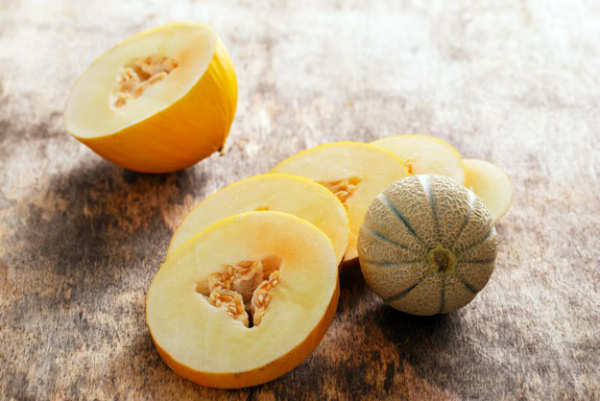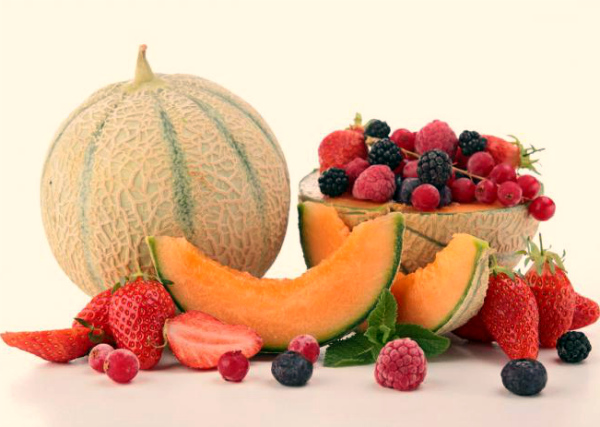Is melon a vegetable, berry or fruit?
Origin
According to biology textbooks, melon belongs to the Pumpkin family, the genus Cucumber, and is essentially a melon crop. It is widely believed that it spread from the endless expanses of Central and Asia Minor. There is a grain of truth in this, because she loves warmth and an abundance of light, is quite resistant to soil salinity and drought, and at the same time reacts negatively to high air humidity.
However, for the first time in the pages of history, the melon appears as one of the sacrificial gifts on Egyptian frescoes dating back to 3-4 millennia BC. However, around the same period of time, it was cultivated by many peoples who lived on the territory of the currently existing Uzbekistan, Tajikistan, Turkmenistan, Iran and China.
Of course, in those days, the melon grew in the wild, so its pumpkins were significantly different from those fruits that we are used to eating now. Most of the ancestors of modern melon belonged to the genus Cucumis and grew abundantly in Africa. Of the 38 species, 32 grew throughout the African continent, but were not limited only to this territory, travelers often met the fruits in Guinea and Arabia. In their shape and taste, they were similar to those that grow in India: small pumpkins are egg-shaped and practically do not smell.
If you pay attention to other natural areas where melons have freely grown since ancient times, then in Northern Manchuria they appeared from the tropical part of Asia and partly from Africa. But this plant came to China from India. It is curious that it is in these regions that wild melon is widespread, while in the rest the domesticated variety is more common.
The first mention of melon cultivation in Russia dates back to the 16th century, when the plant was grown in greenhouses. However, planting in open ground was quickly transferred.
Afghanistan and Northwest India are considered to be the homeland of cultivation of the melon we are accustomed to. It is in these regions that the transition from wild to domestic culture with traces of selection can be traced. Apparently, it was from there that the seeds of an already cultivated plant came to Turkey, where there is probably the largest number of varieties and varieties of this culture. This is not surprising, given the favorable climate for its growth.
So this member of the Pumpkin family traveled a lot across continents and countries before taking on the form we are used to - a large, juicy and sweet pumpkin.
Vegetable, fruit or berry?
No matter how interesting the travels of melons across continents are, this does not answer the question of many interest, how to correctly name a culture: a fruit or a vegetable. To begin with, there is a significant difference between the culinary and botanical definitions of many plants. So, for example, we used to say “fruit” about all sweet fruits, and “vegetable” about any unsweetened part of the plant.That is, given that melon is sweet and usually eaten as a dessert, from a culinary point of view, it is a fruit.
In biology and botany, everything is different. A vegetable is the leafy part of a plant (such as spinach), roots (such as a carrot), stems (such as ginger), or flower buds (such as cauliflower).
According to BES, a vegetable is also called a fruit, meaning those parts of a plant that form from a flower and serve as a storage for seeds. Dry fruits include: leaflet, bean, pod, capsule, nut, caryopsis. Juicy: berry, apple, pumpkin, drupe. Expanding this definition, a vegetable is a succulent part of herbaceous plants that are eaten, such as shoots, roots, tubers, rhizomes, inflorescences, leaves, heads of cabbage, bulbs. Since the fruits of the melon are pumpkin, from the point of view of botany, it is a vegetable.
The confusion arises from the fact that "fruit", as a definition, is used along with the fruit. Fruit - The edible fruit from a tree or shrub, usually angiosperm, and also derived from an ovary.
The following species variations of the large “fruit” group are shared:
- with juicy pulp and seeds - orange, melon, apple, cucumber;
- with juicy pulp and large bones - cherries, peaches, plums;
- dry fruits - nuts, beans, peas.
Therefore, melon fits both categories at the same time, being both a fruit and a vegetable. At least why argue with botany?
Nothing less than a fruit vs. vegetable ", takes people to a dispute on the topic:" What if a melon is not a fruit or a vegetable, but a berry? " And then everything becomes a little more complicated, since this representative of the Pumpkin family is indeed a berry in addition to everything else, again in a botanical definition. We used to call small juicy fruits that grow on trees, grasses and bushes as berries. And the melon is not at all like a cherry or strawberry, at least in size. What's the logic?
According to the botanical definition, the berry has a thin shell, juicy pulp and hard bone. It is formed from the ovary, but it can appear not only from it, but from any part of the flower (in strawberries and strawberries, the berry is formed from a receptacle). This development pattern is called a false berry.
Melon pumpkin, watermelon and cucumber (even a cucumber is not just a vegetable!) Are similar in structure to berries, but differ in a significantly larger number of seeds and pericarp. Consequently, these representatives of the Pumpkin belong to the false berries.
Video "What fruits are berries"
This educational video explains the different classifications of cultures. Thanks to this short video, you can figure out whether a melon is considered a vegetable, fruit or berry.




